According to Grierson (Central Asia) the people of the Media were Aryans and were here in 2500 BC. Aryans were dominant in the media. Their gods were those whose names we find later in India and that they were Satem speakers, which is more closely related to ancient Sanskrit.
Almost all the imperialist and leftist historians agree with this point of Grierson because these people spread various lies and fabricated history only to prove that the Hindus of India had come to India from Central Asia. The question arises that when only 2500 BC Central Asia was the stronghold of Vedic civilization, culture, religion and Aryan Hindus, then what happened suddenly that, according to these historians, the Hindu history of Central Asia came to an abrupt end and the first millennium BC Since then no history of Hindus is visible there?
Did the Muslims of Central Asia die out after the Turkic/Mongol Muslims of Central Asia established the Delhi Sultanate and the Mughal dynasty in India? Even if it is assumed that Hindus came to India from Central Asia only 1500 BC, then Hindus have been living in India for at least 3500 years, at least in present-day India, despite facing terrible Arab, Turkish-Muslim invasions. Then when and how did the Hindus suddenly disappear from Central Asia? Imperialist and leftist historians do not answer these questions because they have to write the fake agenda history of India to fulfill their vested interests.
But historical and archaeological evidence of Central Asia shows that Hindus did not end there. The people of Central Asia and East Central Asia were predominantly Hindus and Parsis (Persian Hindus) before they converted to Buddhism and were forcibly converted to Islam. I have already proved that the Sakas of Central Asia were Suryavanshi Kshatriyas exiled from India and they followed the same Vedic culture and religion with local changes. Even when the Shakas attacked India, they were Hindus. In this article I am giving evidence of the Kushanas and Tushars of Central Asia being Hindus.
Left Wing History of Kushans
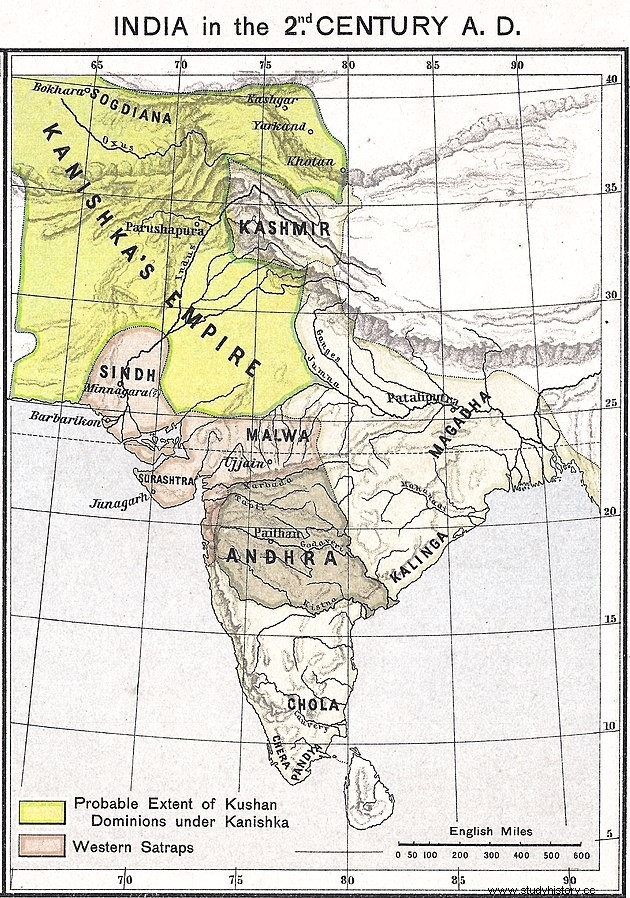
The leftist historians tell us in relation to the Kushanas that the founder of the Kushan dynasty was Kujul Kadphisus of Central Asia. The original place of the Kushanas was in China and they were the people of Yuchi clan who had been driven from China. Kujul Kadphisus was the chieftain of the small Yuchi clan and was a Buddhist. His grandson Vima Kadphisus had adopted Shaivism, his great-grandson Kanishka was a Buddhist and he was the most illustrious king of the Kushan dynasty in India.
And under Agenda History explain that Buddhist Kanishka was the most glorious king of India after Buddhist Ashoka Maurya and in his history as the real founder of Maurya dynasty Chandragupta Maurya and Chanakya becomes secondary, similarly the real founder of Kushan Empire Kuzul Kadphisus and Veem cudphisus become secondary.
Real History of Kushanas
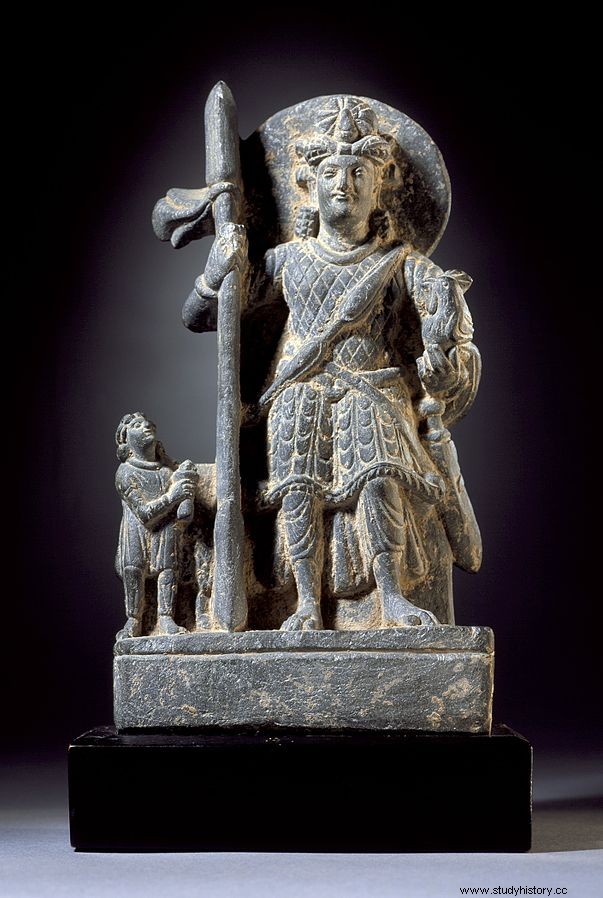
Contrary to earlier assumptions, which regarded Kujula Kadphises as Buddhist on the basis of the epithet of the 'satyadharmasthita' epithet, it is now clear from the wording of a Mathura inscription, in which Huvishka bears the same epithet satyadharmasthita , that the kingdom was upon him by Sarva (Shiva) and Scandavira (Skand, the son of Shiva), that is, he was a devotee of the Hindu God Siva. It is striking to see that Kujula Kadphises has already adopted the worship of Shiva and the use of Kharosthï script at such an early date.
Yes, this is true. Even before reading the book History of Civilizations of Central Asia, I had enough evidence that Kujul Kadphisus was a Shaivite Hindu and not a Buddhist.
Rahul Sankrityayan writes in his book History of Central Asia, “It is not that the Yuchi Sakas (Kushans) adopted Indian culture and religion after coming to India, but where they belonged, that is, in the Tarim Uttaka (modern Xinjiang) of Middle-East Asia. Hindus used to live there." He has used Yuchi Shaka for the Kushanas and the Indian word for 'Uchi' is 'Rishik'.
Kujul Kadphisus, the founder of the Kushan dynasty
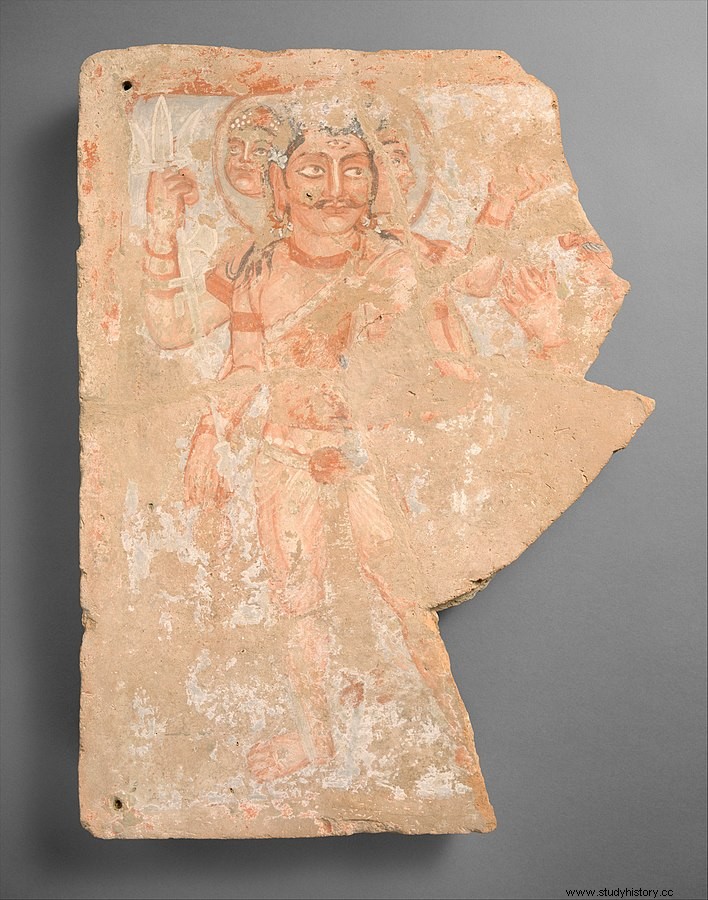
In fact, leftist historians tell only Greek, Chinese names of Central Asian Hindu rulers to us Indians. The ludicrous Greek, Chinese names suggest that they are people of a different race from Indian culture, religion and language, and agenda historians also have the same objective. Like the Kushanas are told by the Yuchi clan of China, but the Indian name of the Yuchis, on which almost all the historians and scholars of the country and abroad agree that the Chinese 'Yuchi' are the 'Rishik' people mentioned in Indian texts, do not tell.
Now look at Kujul Kadphisus. The Indian name of Kujul Kadphisus is Gujur Kapishia. According to historian F W Thomas, Kujul is actually the word Gushur. The opinion of F. W. Thomas has also been supported by a scholar named T. Burrow. For 'Kanishk' also 'Ganishk' is written in many foreign texts.
Cudphisus is a title in the name of Kujul Kadphisus and and his grandson Veem Kadphisus. Kadphisus has been written in different forms, such as Kharoshthi script on the coins of Kujul Kadphisus and Kapsha, Kapsa, Kafsa, Kafsa etc. in Prakrit language. Kujul was proud to be the ruler of Kapisha city of Kamboja, the sixteenth Mahajanapada of India. Therefore, he assumed a title Kapisha, indicating his rule over Kapisha. According to Levi, 'Kapisha' means 'Kapisha man'. (Source:https://en.wikipedia.org/wiki/kujul_cadfises)
In the ancient history of China, Hou Hansu, it seems that a name of Kujul Kadphisus has been written as Tilak. “…the prince of Guishuang, named Thilac [Kujula Kadphises], attacked and exterminated the four other xihou. He established himself as king, and his dynasty was called that of the Guishuang [Kushan] King. He invaded Anxi [Indo-Parthia] and took the Gaofu [Kabul] region. He also defeated the whole of the kingdoms of Puda [Paktiya] and Jibin [Kapisha and Gandhara.”— Hou Hanshu [ Hill (2009), p. 29.]
Ancient History of Kushanas
Before placing any further evidence related to the Kushans being Hindus, let us have a look at the ancient history of the Kushans. Almost all historians agree with the view that the Rishik castes mentioned in Indian texts are the Chinese Yuchi and most historians agree with the view that the Tushars or Tukhars and Kushans were related to the Yuchi tribes.
Rishik means Uchi castes
Vasudev Sharan Agrawal considers the Rishik castes to be the Yuchi castes mentioned in the ancient Chinese source. [India as Known to Pāṇini:A Study of the Cultural Material in the Ashtadhyayi, 1953, p 321] JC Vidyalankar also considers Rishik castes to be Kushanas. Rahul Sankrityayan, who wrote the history of Central Asia, gives the Indian name of Yuchi as Rishik. The famous Buddhist emperor Kanishka had blood relations with a clan named Kushan of this caste.
According to Matsya Purana, Rishika castes are the descendants of Rishis. Historian PN Oak tells the ancient name of Russia as Rishiya Pradesh because according to him in ancient times this region used to be the penance place of sages and sages. Therefore, my opinion is that the Rishik castes may be the people of the Rishi region (Russia) who may have settled in Tarim Uptyaka (Xinjiang) in the later period. It is known that most of Central Asia was called Soviet Russia until a few years ago.
In the Kishkindha Kand of Ramayana, there is a discussion of the northern Rishik castes of Uttarapatha and the second branch of the Rishik castes of Dakshinapatha (near Vidarbha). In the Markandeya Purana also, there is a discussion of the Rishik castes of the Dakshinapath.
In the context of Arjuna's Digvijay in the Mahabharata, Kamboja is mentioned along with Loha (Lohan) and Rishika Janpadas (Sabha. 27, 25). According to the Sabha Parva of Mahabharata, Rishik castes along with Lohan, Parama Kamboj helped in the conquest of the kingdoms of Uttarapatha during the Digvijay of Arjuna. In Mahabharata's Karnaparva and Bhishmaparva also there is a discussion of Rishik castes of Dakshinapatha which was near a Mahajanapada.
Kushan and Tushar
Greek historians write that in the 2nd century BC the Tukhars conquered Central Asia and ruled under the name of the Kushan dynasty, while Chinese sources state that Da Yuchi (Mahayuchi) conquered Central Asia in the respective period under the name of the Kushan dynasty. ruled from.
Kalhana considers the Kushanas to be the descendants of Turushka castes (Tushar, Tukhar). Oral Stein considers the Tukharoi (Tokharoi / Tokarai) a branch of the Yuchi. PC Bagchi considers Yuchi, Tocharioi and Tushar as one caste.
My opinion is that there are so many cultural, religious, social and linguistic similarities between the Kushanas and the Tushars that all historians consider the Kushanas and the Tushars to be of one caste and that is the similarity between the two Indian culture from the past to BC and post-Christian times. , to be firmly attached to religion, tradition and language, with slight local changes. Like the Kushanas, the history of the Tushars is also the Hindu history of Vedic culture, religion and language, which we will explain in detail in the next part of this article.
settlement of Kushanas
In 135 BC, the Kushanas occupied the northern and southern Hindu Kush mountain regions of the Vakshhu River (modern Amu Darya) in the Hindu Kush Mountains region (Wikipedia Kushan). In Mahabharata also Rishik castes are mentioned in the Transoxian region between the Amu river and the Sir river. All scholars are unanimous that the Yuichi were of Indo-European origin and not of Chinese origin, but in Chinese history they are described as from the northwestern part of Gansu Prefecture in the grasslands of Xinjiang. (Indo European in Cental Asia, AK Narain and Central Asia:History and Civilization by Roux, Jean-Paul)
It is known that the people called Indo-Europeans have been associated with Indian culture and Sanskrit language in some way or the other. After the invasion of Alexander in 327 BC, the Greeks settled here and they called this area by the name of Bactria. Bactria was first attacked by the Shakas, then the Kushans defeated the Greeks and snatched the kingdom of Bahlik (Bactria) while driving the Shakas and the Greeks.
Central Asia writer Rahul Sankrityayan writes, “Chinese traveler Changqian before 124 AD finds the Yuchi Shakas (Kushans) to be the masters of the Vakshuvayaka. Bactria was later named Tukharistan because of the frosts. The Yuchi were originally speakers of the Saka language. Their language was related to Irani, Sanskrit and the old Saka language Satem family (ancient Sanskrit)."
He further writes, “In the first century AD, the Indian script and Indian language were used in the southern part of the Tarim valley at that time. It is known from the name etc. that the people who settled from India had priority there. The northern part of the Tarim Utayaka was inhabited by the Shaka-castes (Tushars). Although there was a difference of north-south in language, caste and customs, yet….both regions were the followers of the same religion and culture.”
Kushan Empire
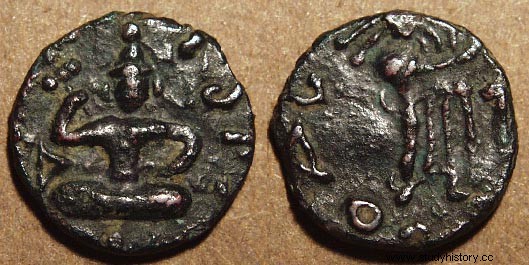
Many historians are of the opinion that the Kushan Tarim was a branch of the Tukhars, the descendants of the Yuchis of Upataka (Xinjiang). In fact, five Yuchi tribes were together in conquering Bactria. Conquering Bactria was followed by a rivalry in which the Kushan clan was the best and attained power under their chieftain Kujul Kadphisus.
Kujul Kadphisus is considered the founder of the Kushan dynasty. According to the Chinese historical text Hou Hanshu, the Kushan chieftain Kujul Kadphisus conquered the Kapisha and Gandhara kingdoms located in the south of the Bahlik region. Kapisha was a prestigious state. The kingdom of Kapisha was named after its famous city and capital 'Kapisha'.
Kujul Kadphisus was a believer of Shaivism. Being a Hindu, there was also a feeling of equality of all religions in him. Therefore he also patronized Greek, Buddhist, Zarathusta religions. This region was under the control of the Greeks for about 350 years, so the early influence of Greek religion, culture, language and costumes on the Kushans is visible. The political culture and language of the early Kushanas probably remained Greek, later the Bahlik (Aryan language) and the script became Kharoshthi-Brahmi.
Descendants of Kujul Kadphisus
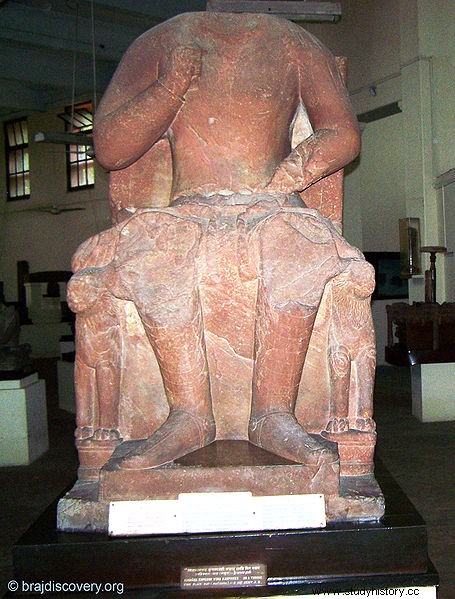
The Rabatak inscription of Afghanistan shows that the name of the brother of Gujur Kapisiya was Sudakshna (which was also the name of a Kamboja king mentioned in the Mahabharata). His son's name was Vima Tahkto (Bhima Thakor?). His grandson's name was Veem Kadphisus (Bhima Kapishiya) and he was also a Shaivite. The main credit for the expansion of the Kushan Empire in India goes to Bhima Kapishia. He is credited with minting the first gold coin in India and issuing the largest number of gold coins.
The gold inscription of Senvarman mentions Sudakshana as the son of Devaputra and Maharajadhiraja Kujul Kadphisus.
There is an idol of Shiva on one side of the gold coin of Bhima Kapisiya. Mahishvar is also written on some one in the name of the king, which shows that he is Shaivite. Its coins have a crown-armed king standing with a mace and prong on one side and Vasileus Vimkadphisus inscribed in Greek script and Mahrajas Rajadhirajas Sarvalog Ishwaras Mahishvarus Vimkadphisus inscribed on the other side. (History of Central Asia)
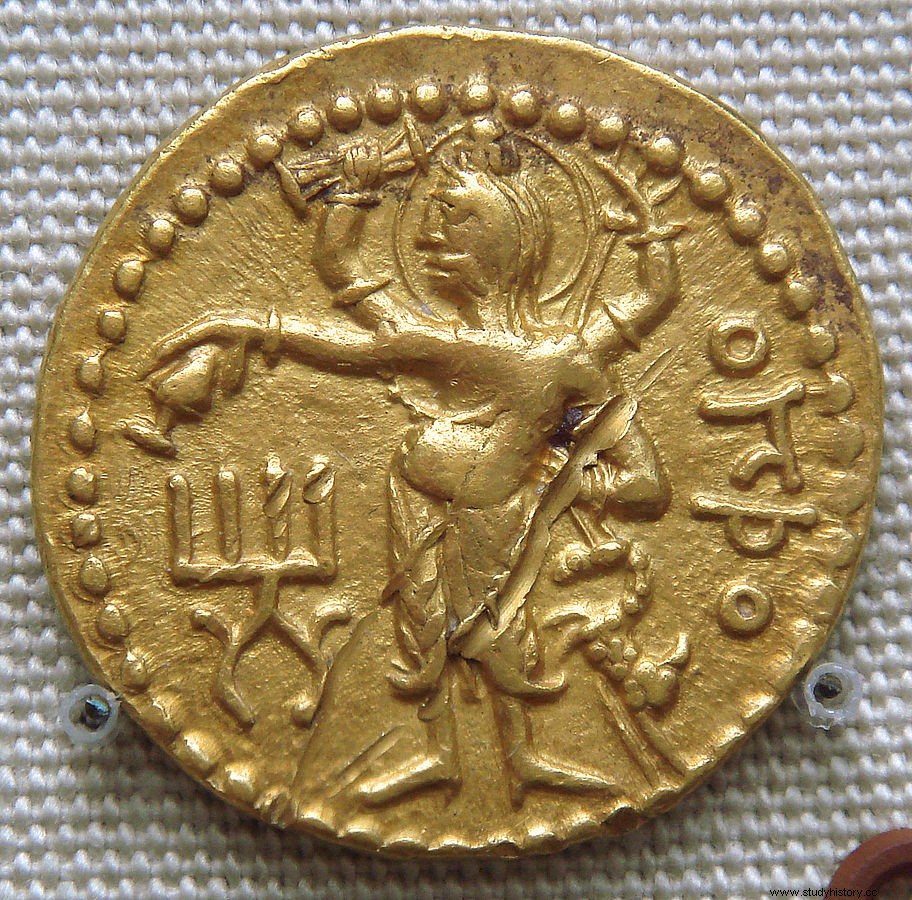
The son of Bhima Kapisiya was the famous king Kanishka who adopted Buddhism following the policy of Minander. During this time the Kushan Empire expanded from modern Uzbekistan, Tajikistan, Turkmenistan, Kyrgyzstan to Mathura in India. Turkmenistan was to go to Merv, the Buddhist city of the Kushans. (Wikipedia)
Kanishka badly defeated the Chinese army and succeeded in getting the country of his ancestors at Tarim-Utyaka (Xinjiang). Buddhism or Indian culture was not a new thing for Kanishka, as Buddhism and Indian culture had predominance not only from the time of his father-grandfather, but also when he lived in Tarim-Uttika, the native place of the Kushanas. (History of Central Asia)
Idols of Indian gods and goddesses are found on the Sikhs of Huvishka. A copper coin of Huvishka bears a picture of the son of a deity riding on an elephant on the obverse, wearing a crown on his head with a prong hook in his hand, and a standing statue of a deity on the reverse. (History of Central Asia)
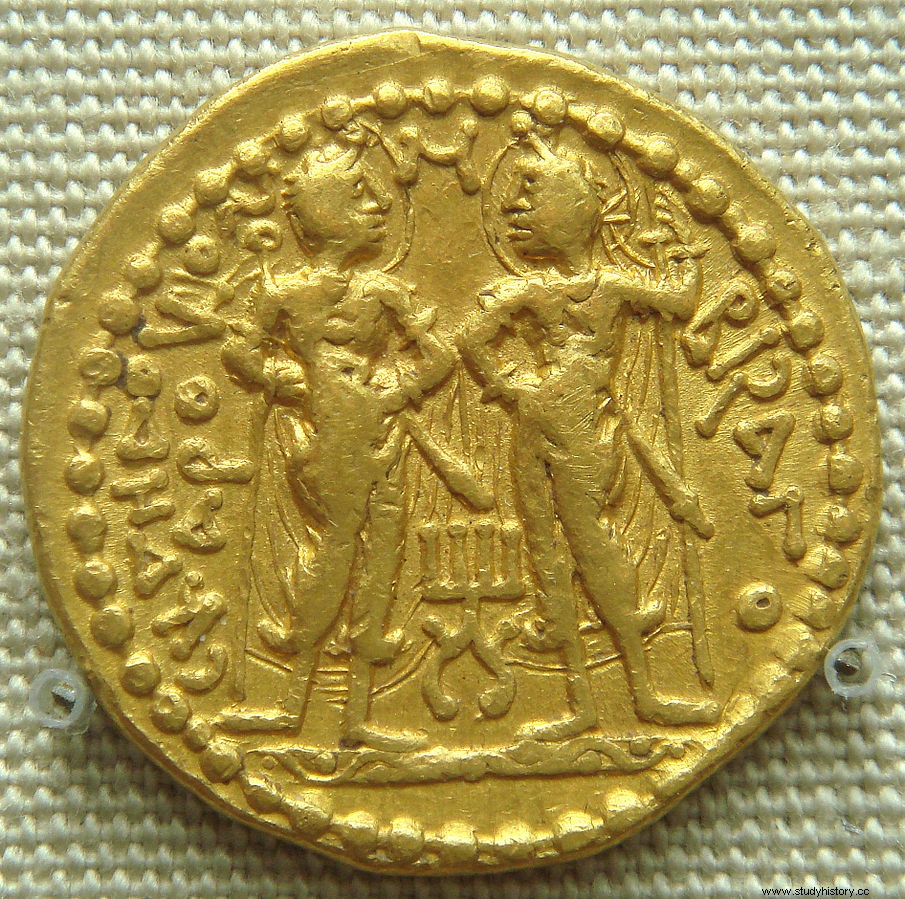
The idols of Shiva, Visakha etc. are found on the coin of Vasudev, due to which his faith was more on Hindu religion. Nana Devi was worshiped in Kapisha, Bactria, Sogdiana, Khvarezm etc., whose idol is found on all earlier Kushan coins, but very little is found on Vasudeva's coins. Shiva and the river had predominance on its coins. (History of Central Asia)
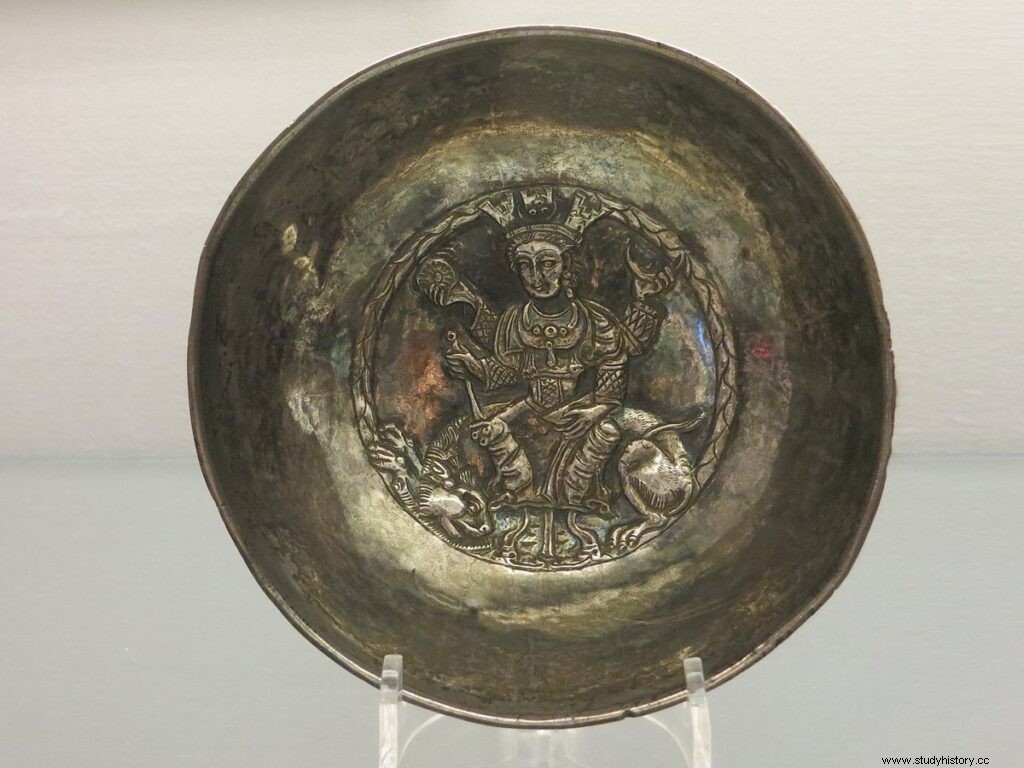
Nana Devi was probably Parvati Devi riding on a lion as the idol of Nana Devi is found on Kushan period coins as a pair with Oesho (Shiva). हुविष्क और उसके बाद के सभी कुषाण शासक विशुद्ध हिन्दू धर्म और भारतीय संस्कृति का पालन करते थे, हाँ, हिन्दू होने के नाते वे सर्वधर्म समभाव में विश्वास भी रखते थे.
अंतिम प्रमाण
एक तरफ भारत के वामपंथी इतिहासकार शकों, कुषाणों और हूणों (श्वेत हूण) को विदेशी और आक्रमणकारी बताते हैं दूसरी ओर भारत के गुर्जरों को कुषाणों के वंशज और राजपूतों को शकों और हूणों के वंशज भी बताते हैं जो भारतीय सभ्यता, संस्कृति, धर्म, परम्परा और भारतियों के निर्विवाद पालक और संरक्षक थे और हैं.
परन्तु आश्चर्य है कि वे यह बात छुपाने की भरपूर कोशिश करते हैं कि मध्य एशिया के शक, हूण, कुषाण आदि की अपनी सभ्यता, संस्कृति, धर्म, परम्परा आदि क्या था क्योंकि यही उनके एजेंडा इतिहास को सूट करता है. सवाल है आक्रमणकारी मुसलमान और ईसाई (अंग्रेज) क्या भारत आकर हिन्दू बन गये? भारतीय सभ्यता संस्कृति धर्म परम्परा के रक्षक और पालक बन गये?
मध्य एशिया में हिन्दुओं के होने का अन्य प्रमाण
लेखक Marie Grahams लिखते हैं, “प्राचीनकाल से भारत और समरकंद में लोगों का आना-जाना बड़े प्रमाण में बराबर होता रहा है. बाह्लीक प्रदेश (बल्ख) और अन्य उत्तरी नगरों में अनादिकाल से हिन्दुओं की बस्तियां हैं. हिन्दुओं का यहाँ एक प्राचीन तीर्थस्थल भी है…. वह काश्यपीय (Caspian) सागर तट पर स्थित है.” (letters on India, Writer-Marie Grahams)
“अर्बस्थान तक के प्रदेशों में और उत्तरी ईरान में भी हिन्दू बड़ी संख्या में पाए जाते हैं. ये लोग वहीँ के प्राचीन निवासियों के वंशज हैं. वे किन्हीं अन्य देशों से आकर यहाँ नहीं बसे. जब हजारों की संख्यां में स्थानीय जन मुसलमान बनाए जाने लगे तो उनमें जिन्होंने किसी भी दबाब व प्रलोभन में फंसकर इस्लाम धर्म स्वीकार नहीं किया, वे यह लोग हैं.” (Memoirs of India, Writer-R.G. Wallace)
गोडफ्रे हिगिंस के ग्रन्थ इंडिया इन ग्रीस के पृष्ठ ४३ से ५९ पर उल्लेख है कि “भारत के नगरकोट, कश्मीर और वाराणसी नगरों में, रशिया के समरकन्द नगर में बड़े विद्याकेंद्र थे जहाँ विपुल संस्कृत साहित्य था.” मारकंड (समरकंद) मध्य एशिया का देश उज्बेकिस्तान का एक शहर है. अतः भारत के साम्राज्यवादी और वामपंथी इतिहासकार जो हमें पढ़ाते हैं कि अफगानिस्तान से आगे हिन्दू नहीं रहते थे, बिलकुल गलत हैं. वे तो आधुनिक अफगानिस्तान के हिन्दू, बौद्ध इतिहास को भी छुपाने का भरसक प्रयत्न करते हैं.
